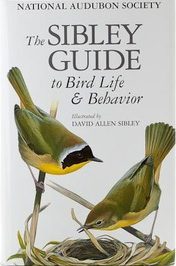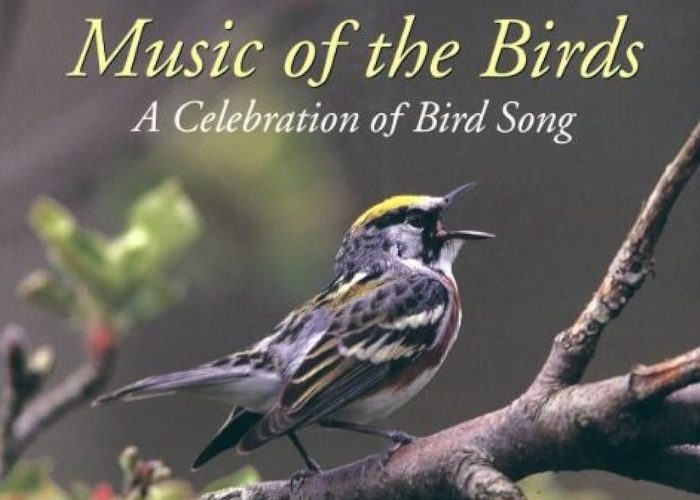Nature Matters: A Naturalist’s Library — Bird Books
By John L. Turner

From time to time I’m asked a variation of the following question: What bird-nature-environmental books did I enjoy reading or am currently reading? This got me thinking — why not share the Nature Matters column to explore some of my favorite books on aspects of nature including a first article on birds. So beginning with this column focused on birds, future articles will focus on what I think are broader important and worthwhile books on nature and our relationship with it including numerous environmental struggles, the personalities involved in these struggles, and broader issues of planetary sustainability.
Tens of millions of Americans have an interest in birds, an interest that ranges from mild to downright intense. Many authors have catered to this, producing thousands of books on a wide variety of bird related topics — bird identification (a future column itself on guides), migration, feathers, coloration, adventures to see birds, how to be a better birder, bird song, bird flight, the history of ornithology and birding, and conservation issues, to name a few. Hundreds of more technical books on birds have been written on such topics as evolution, anatomy and physiology, and mating systems.
So the following are a few of the books on birds I recommend you consider cracking the covers of:
There are a number of books that are overviews of the avian world that should serve as the core of any bird library. Birds & People by Mark Cocker is an example. It is a tome, coming in at 591 pages, and as you might guess is exhaustive in its treatment — covering all of the world’s bird families with the author providing fascinating information about each bird group with an emphasis on human interactions, folklore, and cultural significance.
 Another book that has a slightly different format but is richly informative is The Sibley Guide to Bird Life & Behavior (numerous authors). It, too, discusses the unique qualities of different bird families but before the family discussion has five chapters that delve into great detail about Flight, Form, and Function; Origins, Evolution, and Classification; Behavior; Habitats and Distributions; and Populations and Conservation. If I were able to recommend only one book for your nightstand to increase the breadth and depth of your knowledge about birds it would be this book.
Another book that has a slightly different format but is richly informative is The Sibley Guide to Bird Life & Behavior (numerous authors). It, too, discusses the unique qualities of different bird families but before the family discussion has five chapters that delve into great detail about Flight, Form, and Function; Origins, Evolution, and Classification; Behavior; Habitats and Distributions; and Populations and Conservation. If I were able to recommend only one book for your nightstand to increase the breadth and depth of your knowledge about birds it would be this book.
Yet another book in this genre — a comprehensive overview of birds — is Kenn Kaufman’s Lives of North American Birds. Here the author focuses at the species level rather than the family, providing basic and important information about various aspects of specific birds’ life histories such as diets and habitats used. Also worth your consideration is the comprehensive species guide — Pete Dunne’s Essential Field Guide Companion.
Shore birds — sandpipers, plovers, and the like — are one of my favorite groups of birds and they have been the focus of a number of books. Two classics are Peter Matthiessen’s The Wind Birds and Fred Bodsworth’s Last of the Curlews, a story about the sickening demise of the Eskimo Curlew, a bird once common on Long Island but now believed extinct due to the rapaciousness of uncontrolled sport and market hunting. Perhaps these books can be secured on eBay or at a used bookstore.
The World of the Shorebirds by Harry Thurston is another worthwhile addition to your bird library replete with stunning photographs of shorebirds and the wetland habitats they frequent.
More recently, the red knot, a plump robin-colored shorebird which has declined precipitously in abundance, has been the subject of a few books including Moonbird by Phillip Hoose, The Flight of the Red Knot by Brian Harrington, and The Narrow Edge by Deborah Cramer. The first book chronicles the life of a single red knot that has lived long enough during its annual migrations to have traveled the distance to the moon and halfway back, the second a straightforward overview of the species, and the last book exploring the relationship between red knots and horseshoe crabs, the eggs of which the bird depends upon on its northbound journeys in the Spring.
If bird intelligence is of interest to you The Genius of Birds by Jennifer Ackerman should be on your mandatory reading list. As the title suggests this book covers many fascinating aspects of bird intelligence and memory. Take, for example, the Clark’s Nutcracker, a western species, that can successfully find tens of thousands of seeds its cached scattered across several square miles, displaying memory prowess that put ours to shame.
The Bird Way is another book by Ackerman which probes the ways in which birds talk, work, think, and play. It contains one of the most startling things I’ve ever read about bird behavior: apparently some Australian raptors (e.g. hawks and eagles), knowing how it is easier to capture animals fleeing from a wildfire, are known to pick up smoldering sticks and drop them away from a fire in an effort to expand or start a fire!
Many books have been written about birds and their singing prowess. One of my favorites is Lang Elliot’s Music of the Birds: A Celebration of Bird Song. Besides containing many beautiful color photographs and highly informative text on the function of song, the difference between calls and songs, and how song has inspired humans for millennia, etc., the book comes with a CD filled with bird songs, calls, and the famous “dawn chorus.”
Three outstanding books on bird migration, definitely worth your time, are A Season on the Wind by Kenn Kaufman and A World on the Wing and Living on the Wind by Scott Weidensaul. In these books the two authors document their experiences traveling around the world trying to better understand the fascinating movement of migratory birds. Songbird Journeys by Miyoko Chu is another enjoyable book on this topic.
If the global movement of birds excites you then Eye of the Albatross by Carl Safina is a most worthwhile read. An outstanding nature writer, Safina chronicles the travels and travails of Amelia, a wide-ranging albatross; besides learning about albatross migration and biology and aspects of the ocean environment, Amelia is a “window” for understanding the struggles all wildlife face on a planet being increasingly usurped by humans.
Two very different books by Bridget Stutchbury are worthy reads: Silence of the Songbirds and The Private Lives of Birds: A Scientist Reveals the Intricacies of Avian Social Life. The former discusses the threats facing birds in today’s wounded world while the latter focuses on how birds interact.
Back to Peter Matthiessen, we have his delightful overview of the world’s cranes in The Birds of Heaven. An added bonus are the beautiful paintings by Robert Bateman. The author travels around the world learning about this iconic and charismatic group of birds including the two species native to North America — Whooping and Sandhill Cranes.
Lastly, if you’d like to see a current, real world example of bird evolution happening before your very eyes I invite you to read The Beak of the Finch by Jonathan Weiner, for which the author won the 1995 Pulitzer Prize. In this fine book the author documents the extensive studies of Peter and Rosemary Grant, who have spent their lives documenting changes to the various finches (and their bills) that live in the Galapagos Islands located off the west coast of South America and made famous by Charles Darwin.
As Long Island turns away from summer and colder weather arrives, driving most of us indoors, why not explore the fascinating avian worlds presented in these books (and many others not covered here!) All you need is a glass of wine, a comfortable chair, and a curious mind.
A resident of Setauket, author John Turner is conservation chair of the Four Harbors Audubon Society, author of “Exploring the Other Island: A Seasonal Nature Guide to Long Island” and president of Alula Birding & Natural History Tours.







